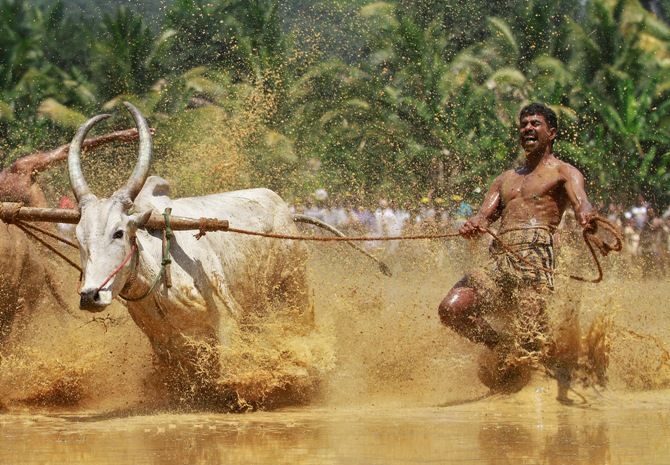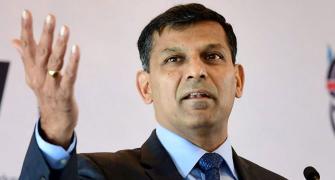The rains in July, the most crucial month for sowing of kharif crops, were 6.6 per cent more than normal.
 When Reserve Bank of India (RBI) Governor Raghuram Rajan delivers his last bi-monthly monetary policy statement on Tuesday, he will have one thing less to worry about - poor performance of southwest monsoon and its impact on kharif sowing and food inflation.
When Reserve Bank of India (RBI) Governor Raghuram Rajan delivers his last bi-monthly monetary policy statement on Tuesday, he will have one thing less to worry about - poor performance of southwest monsoon and its impact on kharif sowing and food inflation.
The bountiful rains in the first two months of monsoon season this year and its rather rosy forecast going forward have meant that not only is the production of kharif crops projected to be high this year, rabi harvest is also likely to be good if the rains withdraw late, leaving adequate residual moisture in the soil.
The Met Office figures show that till August 7, the southwest monsoon has been three per cent above normal at 534.2 millimetres.
The good rains have also filled up the reservoirs at a brisk pace and till last week, the water levels in the reservoirs were at 45 per cent of full capacity, up 165 per cent from June-end.
Although the rains in parts of Gujarat, Jharkhand and East and Northeast India have been less than normal so far, there are chances of a revival in the coming weeks. The showers that started on a bleak note gathered momentum as the months passed.
The rains in July, the most crucial month for sowing of kharif crops, were 6.6 per cent more than normal.
The July rains were among the best in the past 10 years. The rains might have been a godsend for cereals and pulses.
They are not that beneficial for vegetable and fruit, whose prices have gone up by 10-30 per cent in the past few months because of damage to the standing crop. Vegetables usually have poor storage facilities and June to August is a peak harvest season for some.
Nonetheless, the sowing of most cereals have topped last year’s area and is within touching distance of the normal area - the average area in the past five years.
Till August 5, 2016, the total area covered under kharif crops was 88.52 million hectares (ha), which is 5.19 per cent more than the area covered during the corresponding period of last year.
With 83 per cent of the sowing complete in this kharif season and the southwest monsoon showing no signs of letting up over central and western parts of the country, the overall kharif area this year could better the five-year average of 106.25 million ha.
Data show that pulses have been sown in 12.11 million ha of land, which is almost 40 per cent more than the normal area covered during the same period last year.
The total area under pulses was 36 per cent more than the same period last year, with the highest gains being in arhar, whose prices have topped Rs 200 a kilo this year.
The Centre is already expecting pulses production in 2016-17 to reach 20 million tonnes (mt), which would be one of the best in the past few years.
The previous highest pulses production was 19.25 mt in 2013-14.










